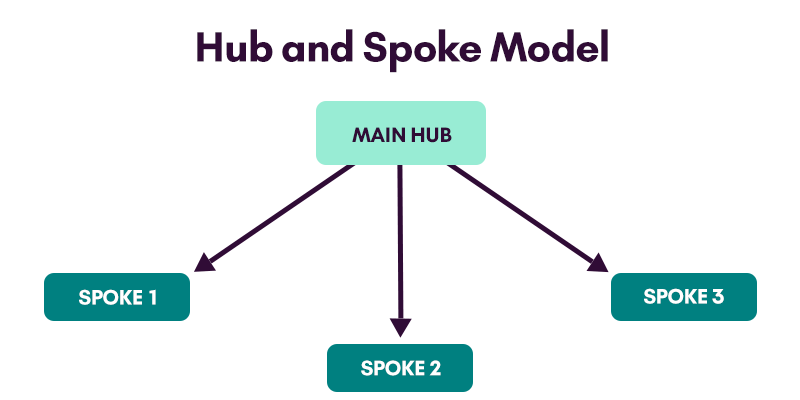A content hub is a centralised space on your website where related content is organised around a specific topic. Unlike a blog that presents posts chronologically, a content hub groups content by themes, making it easy for users to find what they need. Content hubs are designed to keep readers engaged, offer valuable information, and support search engine optimisation (SEO) goals.
Benefits of Content Hubs
Content hubs provide several key benefits, including:
- Enhanced User Experience (UX): Content hubs create a structured layout that’s easy to navigate. Readers can find related information quickly, with clear links and organised sections.
- Establishing Authority: By showcasing various aspects of a single topic, content hubs position your website as a knowledgeable in your field. They allow for deeper dives into subjects, building trust with your audience.
- Longer Lifespan and Reach: Content hubs bring together timeless content that remains relevant for a long time. This enhances both user engagement and organic reach over time.
- Supporting the Customer Journey: Content hubs cater to different stages of the buyer’s journey, from learning about a topic to making a purchasing decision. Each stage is covered, offering value to both new and returning visitors.
Types of Content Hub Models
There are several popular models for structuring a content hub. Let’s go over these with an example focused on music production:
Hub and Spoke Model
This model has a central “hub” page with multiple “spoke” pages that link back to it.
Example for Music Production: The hub page could be titled “Ultimate Guide to Music Production”. Spoke pages might cover topics like “Choosing Music Production Software”, “Basics of Sound Mixing”, and “Creating a Home Studio Setup”. Each spoke dives into one part of the larger music production process.

Content Library Model
A broader model with a large collection of resources on multiple subtopics, all relevant to one theme.
Example for Music Production: The hub page, “Music Production Library”, could link to articles, video tutorials, and e-books covering equipment reviews, production tips, interviews with producers, and genre-specific guides.
Topic Gateway Model
Focused on niche topics, this model provides in-depth content for a specialised audience.
Example for Music Production: A topic gateway hub titled “Electronic Music Production” could host detailed guides on synthesisers, drum machines, sound design, and workflow optimisation for electronic music genres.
Each of these models serves different goals. Choose the one that aligns with your audience’s needs and your content goals.
Content Hubs vs. Blogs
While blogs are generally chronological and cater to current trends, content hubs focus on topic-based organization. Key differences include:
- Structure: Blogs present posts by date, while hubs are thematically organised.
- Depth of Content: Content hubs are designed for comprehensive coverage. Blogs often feature shorter, timely pieces.
- Engagement: Content hubs create a cohesive experience, keeping users on your site longer by offering all related resources in one place.
Examples of Effective Content Hubs
Many brands have embraced content hubs to create value. Here are a few formats that have proven effective:
- Educational Hubs: “HubSpot’s Learning Center” offers free resources on marketing, sales, and business.
- Product Knowledge Hubs: “Adobe’s Creative Cloud Tutorials” covers software guides for their products, appealing to both new and advanced users.
- Industry Guides: “Ahrefs Academy” is designed for marketers at any level, providing a full suite of articles, videos, and tools.
These examples showcase the range of possibilities with content hubs. Each type is customised to meet specific needs and audience expectations.
How to Build a Content Hub
Building a content hub requires careful planning. Here are some essential steps:
- Align Content with Audience Interests: Begin by researching what your audience wants. Identify popular topics and questions they have.
- Organise by Subtopics: Break down the main theme into clear subtopics. Use these as spokes for the hub and spoke model or as individual resources in a library model.
- Offer Multiple Media Formats: Include articles, videos, infographics, or audio files. A variety of formats engages more users and appeals to different learning styles.
- Implement Simple Navigation: Make it easy for users to explore. Add filters, categories, and search options for smoother browsing.
- Update and Expand Regularly: Keep content relevant by revisiting your hub often. Add new spokes, update information, and refresh visuals as needed.
Conclusion
Content hubs can enhance user experience because they offer comprehensive coverage of topics, organised in a way that’s easy for visitors to navigate. This interconnected and easy-to-navigate structure keeps users engaged and encourages them to explore more.
